Black Hills 5.56mm 77 Grain Tipped MatchKing Accuracy Evaluation Update
In 2016 I posted an in-depth review of the Black Hills 5.56 77 grain Tipped MatchKing ammunition. Three 10-shot groups of that 2016 lot had an average extreme spread of 1.26”. The smallest of those groups had an extreme spread of 1.14” with a mean radius of 0.39”.
The cartridge overall length for the 2016 lot of the Black Hills 77 grain Tipped MatchKing averaged 2.246”, while the 2023 lot averaged 2.243”. The length of the bullet itself is basically the same for both lots. The 2016 lot was loaded in Winchester brass and the 2023 lot is loaded in Lake City brass with stab primer crimps. Both lots have sealant in the primer pockets and neither lot has sealant at the case mouth.
In my 2016 review, I noted that the 77 grain Tipped MatchKing was one of the longest bullets being commercially loaded to magazine length in the 5.56mm cartridge and that it had such a long ogive that the cannelure extended past the bearing surface of the bullet and onto the ogive, giving the grooves of the cannelure a rather unique “arrowhead” appearance.
The base to ogive measurement of the bullets in the 2023 lot is approximately 0.017” longer than the 2016 lot and the configuration of the bullet at the junction of the bearing surface and the ogive now allows for a full-fledged cannelure that does not appear to extend into the ogive, or it was just a matter of pressing the deep cannelure that makes it appear so.
A 10-shot group of the 2023 lot of the Black Hills 5.56mm 77 grain Tipped MatchKing ammunition fired from the same Lothar Walther barreled AR-15 used to test the 2016 lot, fired under the same conditions from a distance of 100 yards had an extreme spread of 0.86” and a mean radius of 0.24”.
I’ll be posting chronograph data for the 2023 lot in the near future.
…..




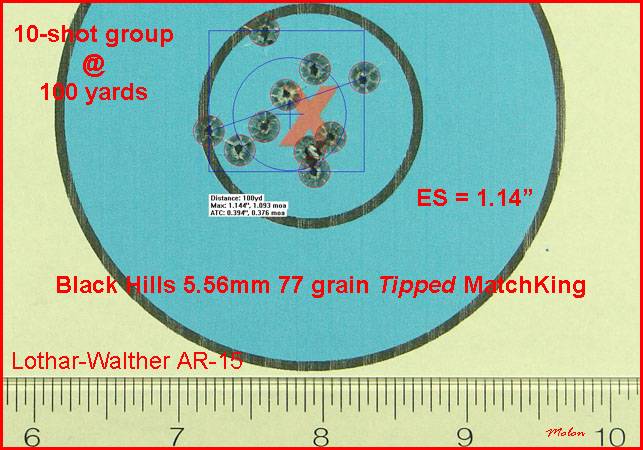

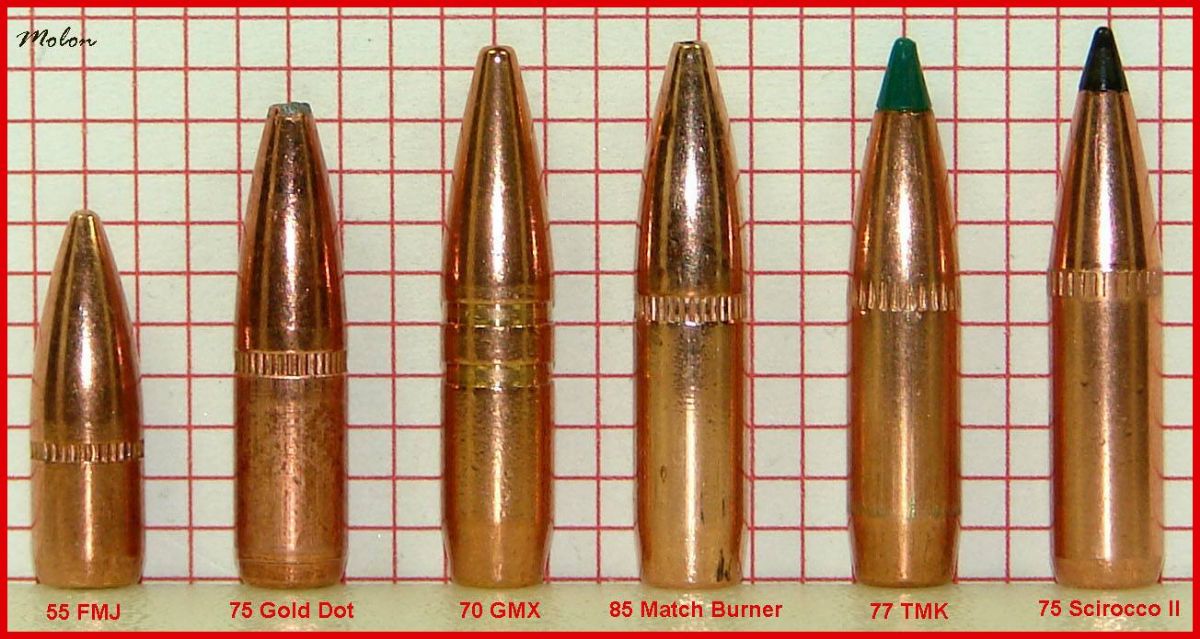

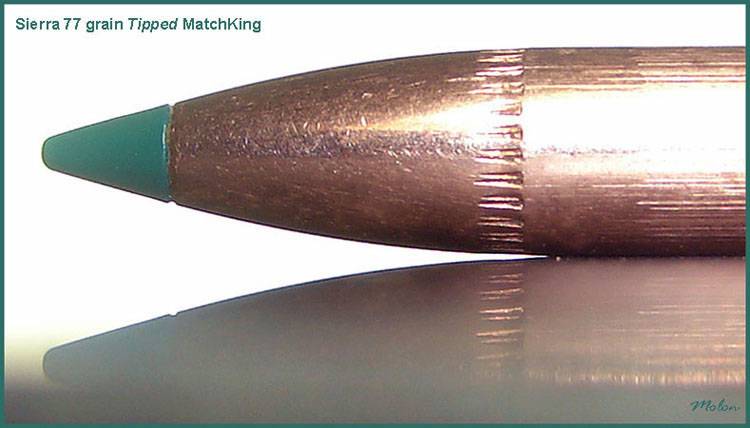
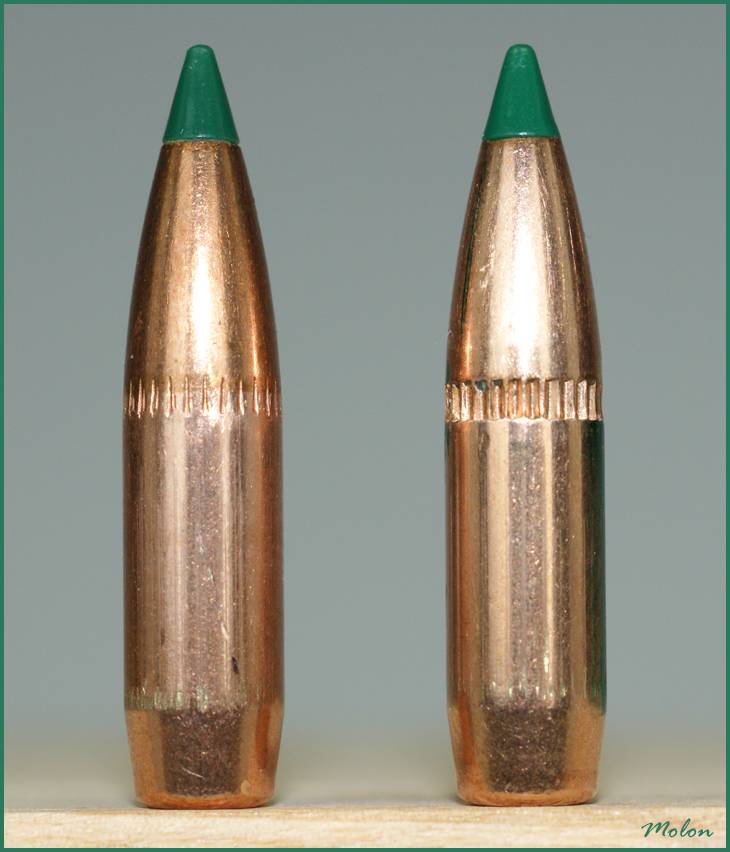
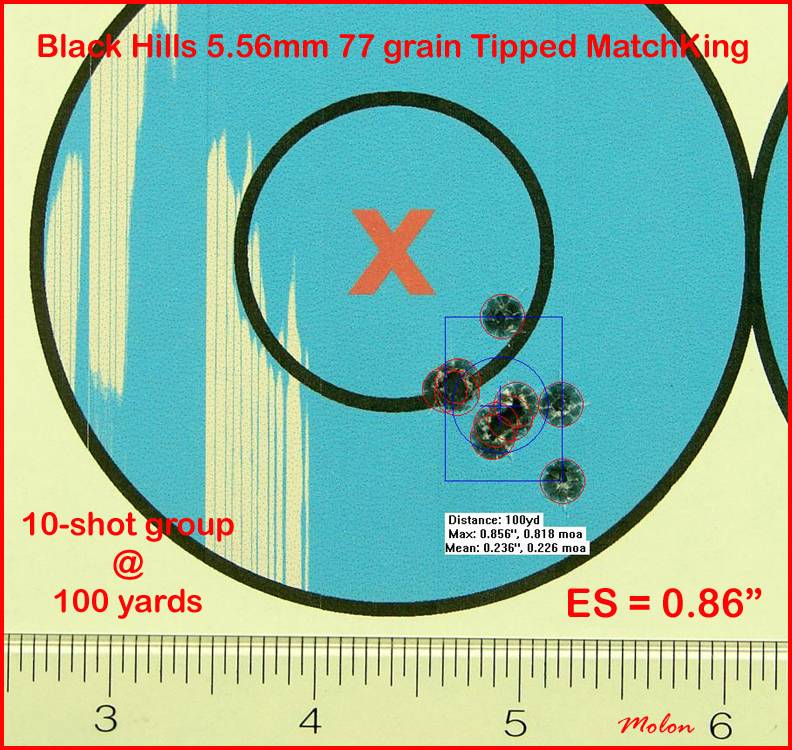

 Reply With Quote
Reply With Quote



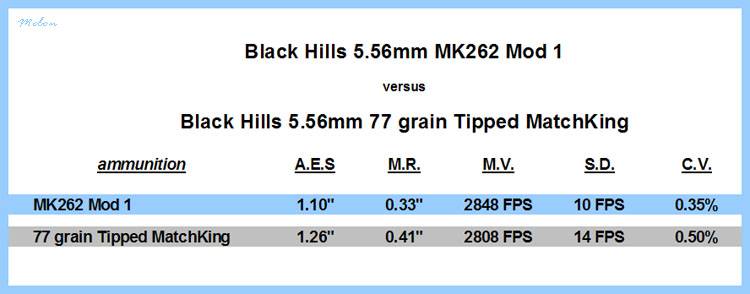
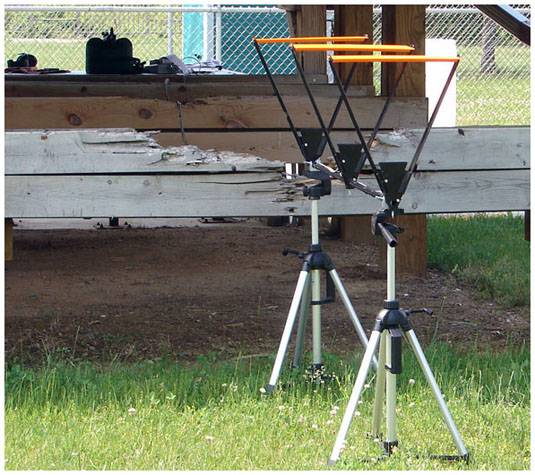



Bookmarks